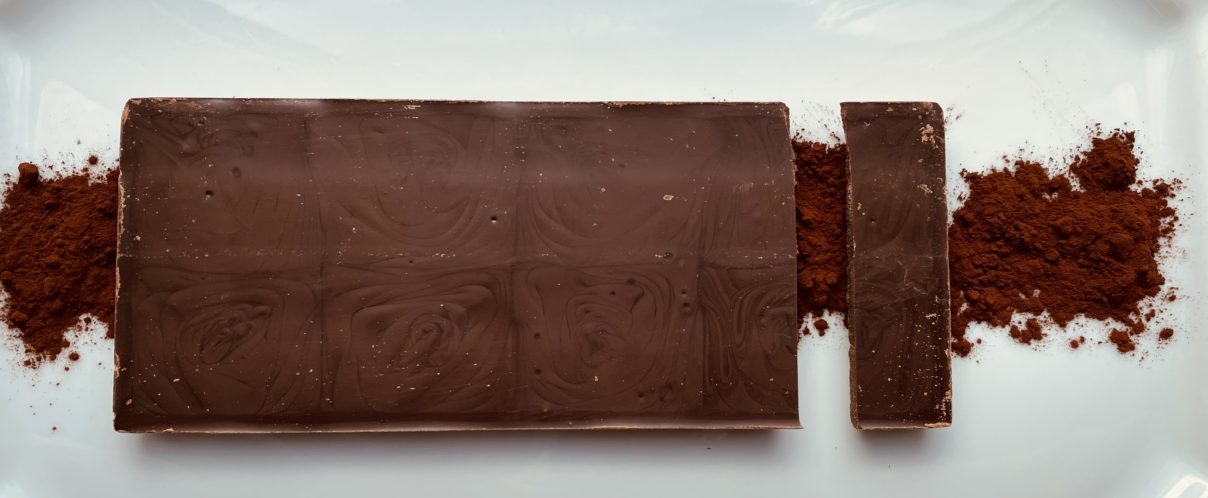UGRI Profile: Freddy Fossey-Warren

Freddy Fossey-Warren reveals his findings into early modern chocolate during his Undergraduate Research Internship at Collingwood College.
Tell us a little bit about your work
The research project I am aiding with is looking at the history of chocolate in the British Atlantic world from its arrival in Europe as part of the Columbian Exchange in the late 15th century all the way up to the present day, with a specific eye to chocolates cultural impact. The project is still in its early stages and, as part of the preliminary research, my role is to spend time in Durham’s many archives and special collections and search for any evidence of chocolate, be that in recipe books, shopping receipts, or even just mentioned casually in letters. While I’ve only just started this research, I’ve already found a number of intriguing documents and I can’t wait to see what I’ll have found by the end of the summer.
Why are you so interested in chocolate?
In modern day Europe, chocolate is everywhere. Every shop or restaurant on a high street will likely sell chocolate in some form, chocolate is always given as gifts on birthdays or over Christmas and Easter, even certain countries such as Belgium and Switzerland are defined, in the minds of many, by chocolate. Yet, at the same time, chocolate was introduced to Europe relatively recently. Being native to the America’s, no one in Europe had even heard of chocolate before the very late 15th century, let alone tasted it. Within this context I think it’s fascinating to consider just how chocolate became the cultural juggernaut it is today over the span of just a few centuries. Chocolate is so ubiquitous nowadays that most people probably don’t give it much thought, but considering just how it became that ubiquitous is, at least in my eyes, an incredibly interesting question.

Tell us what early modern chocolate is
When chocolate was first introduced to Europeans in the late 15th and early 16th century it was primarily taken as a drink. As should come as little surprise, however, many Europeans who were exposed to chocolate took to it incredibly quickly, and not only began drinking it, but began cooking with it more broadly. Chocolate was mixed and eaten with just about anything from spices such as nutmeg and cinnamon, and fruits such as lemons and oranges all the way to hot chilli peppers and even ambergris. Interestingly, it was also used as a medicine, or at least a tonic, by many, with claims that it could help someone get over a bad cough, cure hypochondria, or even merely free the body of ‘bad spirits’. All in all, however, the way chocolate was most commonly used in the early modern period truly didn’t differ too much from the way chocolate is used now, as a sweet treat to be enjoyed whenever wanted.
What can you tell us about recipes from the late 18th and early 19th century you’ve found?
One thing I’ve found very interesting in my research is just how quickly the role of chocolate as a food became codified. Of the handful of recipes using chocolate that I have found, none would seem out of place appearing on a modern day restaurant’s menu. The earliest recipe I’ve been able to find so far was dated somewhere around the very late 18th century and was a recipe for chocolate cream detailed in the personal recipe book of a Mrs Van Mildert from Towcester in Northamptonshire. The recipe was fairly simple, as were the ingredients (milk, chocolate, eggs, sugar and cinnamon), and it is certainly one I might have a go at making myself over the coming weeks. Beyond that, I’ve also found a number of recipes for chocolate cakes and chocolate puddings written throughout the early 19th century. I’m sadly sure what the recipes truly entail as I’m in many cases still trying to decipher the handwriting, but regardless, it’s fun to see how a dessert as common nowadays as chocolate cake was also being baked and eaten at least two centuries ago, if not earlier.
Have you identified any rare books and manuscripts from the Durham collection?
In the short time I have spent in Durham’s archives and special collections I have already found a number of interesting documents. Beyond the previously mentioned recipe books, the only other sources I have so far discovered are letters. At Ushaw College I was able to find two letters from the Lisbon collection to English students studying at English College, Lisbon. Both of these letters are from early 18th century and both discuss chocolate as a contraband item at the college, with one letter funnily referring to a student’s efforts to acquire chocolate as ‘troublesome conniving’. The earliest document I have identified is similarly a letter, but from the mid-17th century. Largely concerned with financial matters, the letter doesn’t mention chocolate until the very end, when the author asks the recipient to send him a box of chocolates as a gift for his wife. Evidently chocolates have been a popular gift for coming on four centuries.
How has the Undergraduate Research Internship programme supported you with your research?
I would never have been able to undertake this research without the support provided by the Undergraduate Research Internship programme. Not only has the UGRI programme provided me with free college accommodation as well as a generous grant, without which I never would have been able to perform this work over the summer, but it was through applying for the UGRI that I came into contact with Amanda Herbert, my research supervisor for this project, and first heard of this fascinating research. None of this would have been able to happen without the UGRI programme and for that I am incredibly thankful.
Find out more
- Set within the magnificent location of Durham’s World Heritage Site, the Department of History at Durham has established itself firmly as one of the top three in the UK. Visit our History webpages for more information on our undergraduate and postgraduate programmes.
- If you’d like to share your undergraduate research experience, visit our Submit a blog or vlog page for more information.
